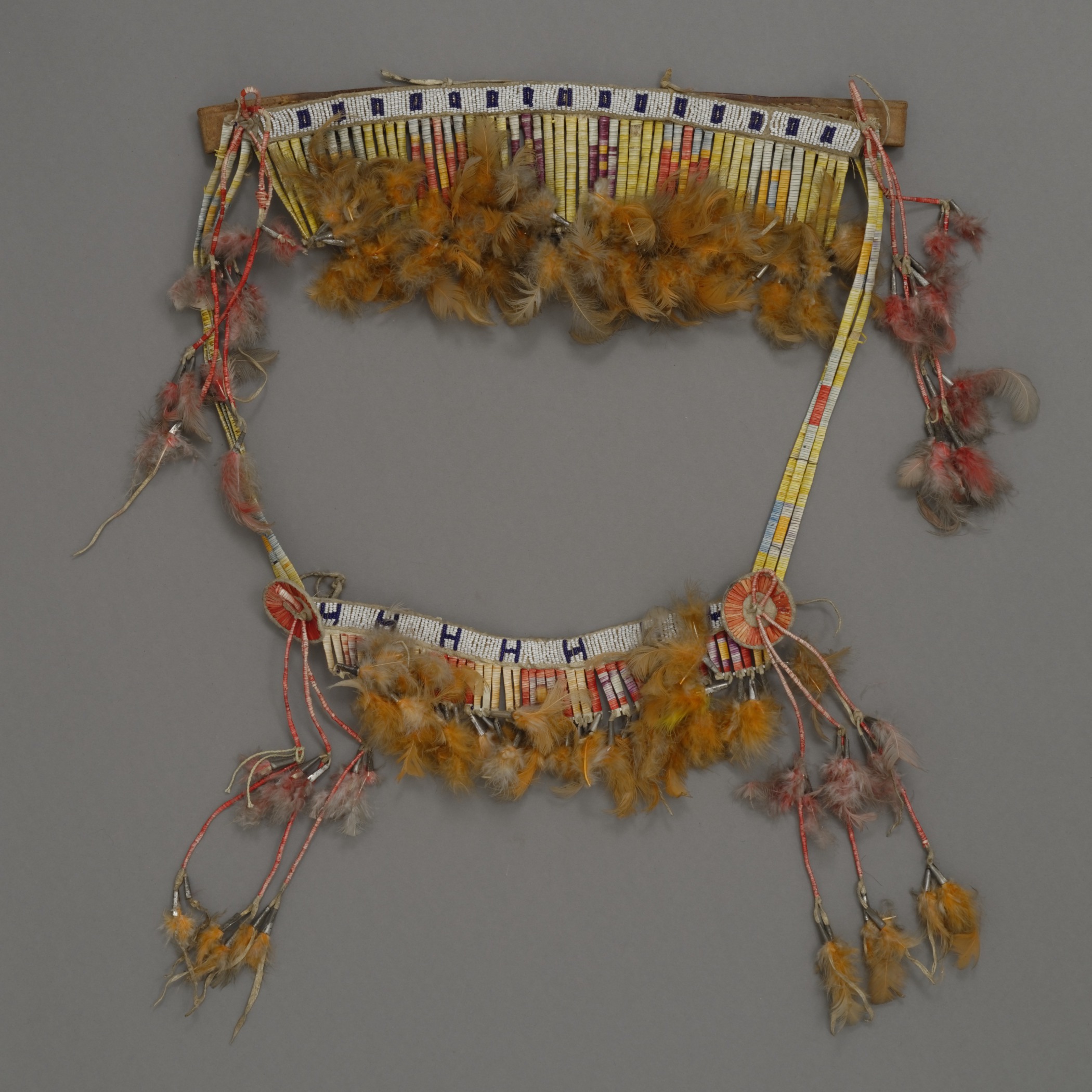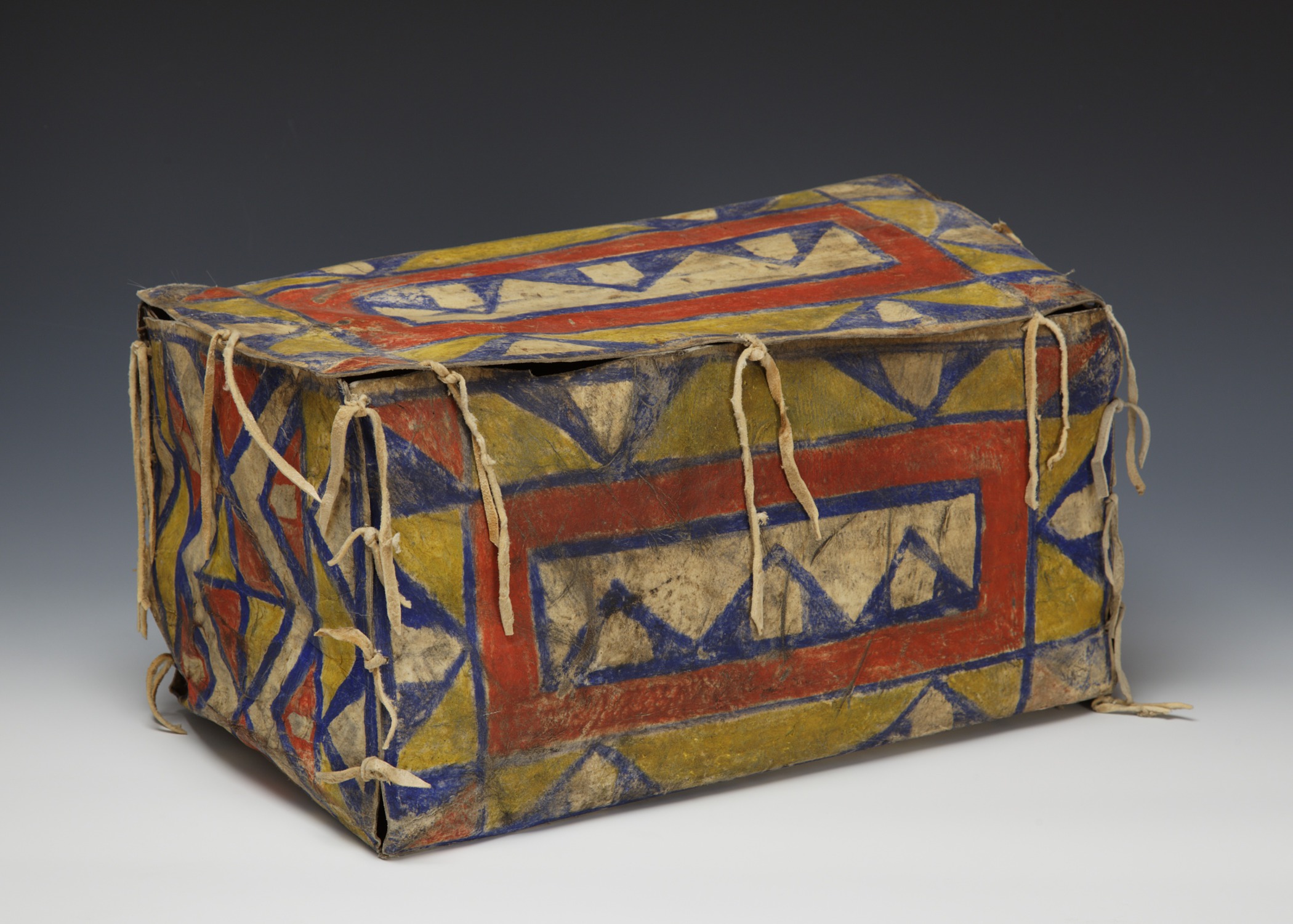Sioux
Four stone-tipped arrows
- Collected about 1877–79
- Feathers, stone, sinew, and paint
- 42 11/16 × 1 1/4 × 13/16 in.
Hood Museum of Art, Dartmouth College: Gift of Edward W. Bush, Jr., Class of 1945, Tuck 1947; 47.12.10807
visibilityLook & DiscussSinew-backed bow
- Collected about 1877–79
- Wood and sinew
- 42 1/2 × 1 3/16 in.
Hood Museum of Art, Dartmouth College: Gift of Edward W. Bush, Jr., Class of 1945, Tuck 1947; 47.12.10805
All Native American groups used bows and arrows as weapons for hunting and war. Bows made on the Plains were the most powerful of all because they had to be able to shoot an arrow through the body of a buffalo.
Explore the Object
Most Native American bows were made of wood. The most powerful were also backed with sinew to make them stronger and springier. Plains bowstrings were made from sinew as well. Older bows used for hunting on foot were large. Once European settlers introduced horses to the Americas, Plains warriors began to use short bows, which were easier to fire from horseback.
Sioux, bow case and quiver, 1877–79. Leather, red wool cloth, and rawhide. Hood Museum of Art, Dartmouth College: Gift of Edward W. Bush, Jr., Class of 1945, Tuck 1947; 47.12.10804.
Plains Indians made arrows from wood with arrowheads carved out of flint or another hard stone. They fletched the shafts with feathers, particularly turkey feathers, to make them fly straighter. They carried bows in a case and arrows in a quiver, a long, narrow bag carried on a warrior’s back.
Over time, Plains men refined the technology of their bows and arrows. They added new materials, like metal for the arrowhead, when they became available through trade with Europeans. Metal arrowheads were easier to shape and more durable than stone ones. Although Plains groups acquired guns in the 1860s, they continued to use bows and arrows as weapons for hunting and warfare because they were quiet, efficient, and effective.




